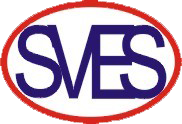
Working status and stress analysis of Drill String(Drill Pipe,Drill Collar, Kelly, Stabilizer)
2024-05-14 10:00Working status and stress analysis of Drill String(Drill Pipe,Drill Collar, Kelly, Stabilizer)
(1) Working status of Drill String(DrDrill Pipeill Pipe,Drill Collar, Kelly, Stabilizer)
1. Under tripping conditions
Straight well: Straight stretching, sliding.
Inclined well: Sliding as the wellbore tilts and curves.Kelly
2. Under normal drillinDrill Collarg conditions
The upper part is stretched and the lower part is compressed and bent; it rotates under the action of torque.
3. Rotary motion form of Drill String(Drill Pipe,Drill Collar, Kelly, Stabilizer)
(1) Rotation: The Drill String(Drill Pipe,Drill Collar, Kelly, Stabilizer) is like a flexible shaft, rotating around its own axis. Uniform wear and prone to fatigue damage.
(2) Revolution: The Drill String(Drill Pipe,Drill Collar, Kelly, Stabilizer) is like a rigid body, rotating around the wellbore axis and sliding along the wellbore wall. Produce eccentric wear.
(3) Combination of revolution and rotation
The curved Drill String(Drill Pipe,Drill Collar, Kelly, Stabilizer) rotates around the wellbore axis while moving around its own axis.
(4) Longitudinal vibration is caused by drill bit vibration, which produces alternating stress.
(5) Torsional vibration is caused by changes in the resistance to rotation of the drill bit at the bottom of the well, resulting in alternating torsional shear stress.
(6) Lateral oscillation reaches a certain critical speed, which may cause irregular oscillation and alternating bending stress.
It is generally believed that the main form of rotation of a curved Drill String(Drill Pipe,Drill Collar, Kelly, Stabilizer) is rotation, but revolution or a combination of the two forms of motion may also occur. Due to the resistance during rotation, the rotation of the drilling tool is unstable.
3. Force analysis of Drill String(Drill Pipe,Drill Collar, Kelly, Stabilizer)
1 Overview
(1) Pulling force generated by self-weight
(2) Pressure generated by drilling weight
(3) Buoyancy of drilling fluid
(4) Frictional resistance
(5) Additional pulling force generated by cyclic pressure drop
(6) Dynamic load generated during tripping
(7) Torque
(8) Bending stress
(9) Centrifugal force
(10) External squeeze force
(11) Alternating stress caused by vibration.
2. The most severely stressed parts of the Drill String(Drill Pipe,Drill Collar, Kelly, Stabilizer):
1) Wellhead section: The largest pulling force and largest torque;
2) Lower compressed bending part: alternating axial stress, bending stress, torsional shear stress
3) Neutral point: (The point on the Drill String(Drill Pipe,Drill Collar, Kelly, Stabilizer) where the axial force is equal to zero (N point, also called neutral point, Neutral Point)
Tension and compression alternating loads.
Reasons for bending of lower Drill String(Drill Pipe,Drill Collar, Kelly, Stabilizer)
The effect of the weight on bit causes the lower Drill String(Drill Pipe,Drill Collar, Kelly, Stabilizer) to be compressed. When the pressure reaches the critical pressure of the Drill String(Drill Pipe,Drill Collar, Kelly, Stabilizer), the Drill String(Drill Pipe,Drill Collar, Kelly, Stabilizer) will lose its linear stability and bend and come into contact with the well wall. Multiple bends may occur when pressure is high.
